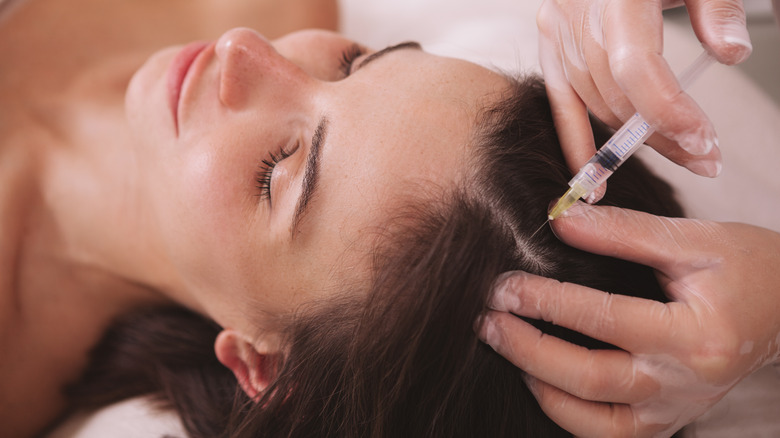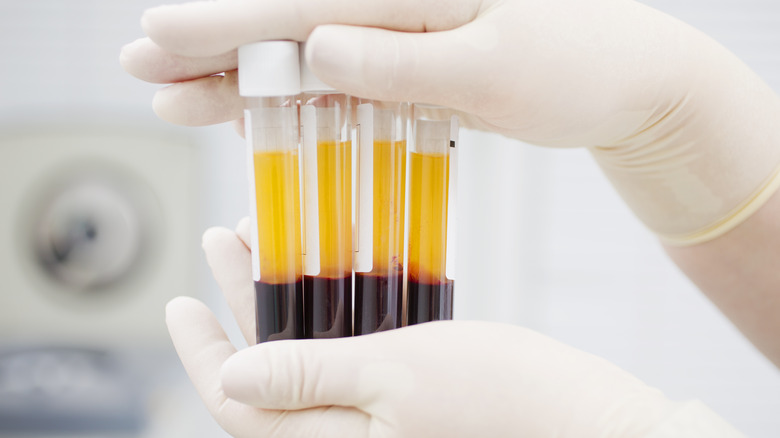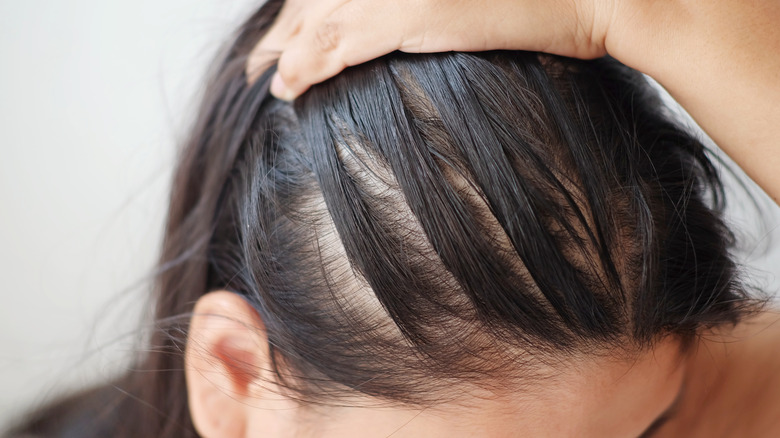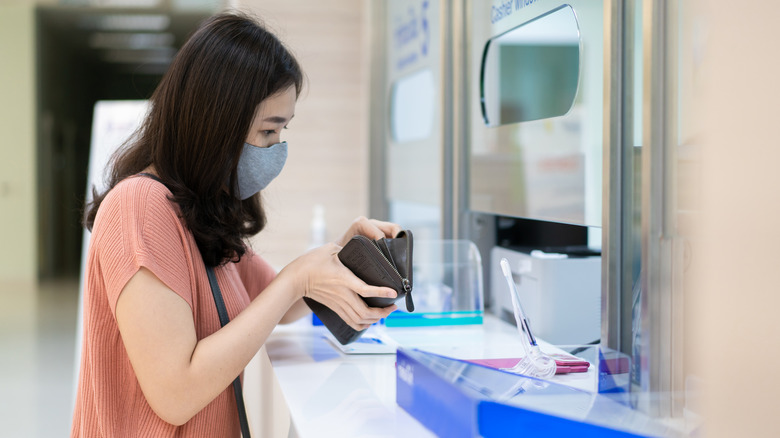PRP Treatments Are The Chemical-Free Procedure That Can Stimulate Hair Growth
According to a 2016 study published in the Journal of the American Academy of Dermatology, around 40% of women experience hair loss before age 50. Despite the prevalence in our population, this phenomenon is often a source of insecurity for women who once had a fuller head of hair. Extensions, volumizing products, and oils designed to promote scalp health and hair growth can give the appearance of fuller hair. Still, many seek a more permanent solution that promises results from the root.
As a result, scalp serums and products like Rogaine have continued to remain popular with both male and female audiences, but there's a new treatment that can help to encourage hair growth without the use of additional products. Platelet-rich plasma treatments include taking, filtering, and re-injecting your own blood right back into your scalp. It might sound a bit vampiric, but 2022 research in Drug Design, Development and Theory shows it's an effective treatment for female pattern hair loss.
What is PRP?
Plasma-rich platelet therapy, or PRP, involves drawing a patient's blood, running it through a centrifuge to separate plasma from red blood cells, and re-injecting it into the body. These injections are frequently used to accelerate the healing time of injuries, especially in the joints, as the platelets in the plasma stimulate growth factors in your body and encourage it to produce reparative tissue more quickly.
Now, however, PRP has found a more aesthetic use. In the Drug Design, Development and Theory study, PRP has positively impacted patients with hair loss from multiple sources. It has also proven beneficial in conjunction with other forms of treatment, like hair transplantation, which could be combined to help quicken results and increase chances of success. Because it involves re-injecting plasma from one's own body, it's also much more accessible to those that have allergies or adverse side effects from other treatment options like steroid injections.
What can it be used to treat?
The research in Drug Design, Development and Theory shows that PRP injections offer positive results for those with several types of hair loss — androgenic alopecia, alopecia areata, and female pattern hair loss. There is also some data indicating that it could be helpful for those with cicatricial alopecia, though results seem to vary depending on the specific type.
Androgenic alopecia is related to excessive androgen, a class of hormones that includes testosterone. This is commonly seen in women with polycystic ovarian syndrome and other ovarian issues and is one of the more common causes of hair loss among younger populations. Alopecia areata, however, is what most people think of when they hear alopecia. It's an autoimmune disease that often causes unpredictable hair loss from a younger age. Finally, there's female pattern hair loss, which is one of the most common issues women face as they age. It usually develops in conjunction with hormonal changes during menopause.
How much does it cost?
One of the biggest downsides to PRP treatment is the cost. Most plans include three treatments over four weeks to a month and a half and follow-up injections every four to six months post-op. The price varies depending on where you live and the individual practitioner, but each injection is typically upwards of $400, with the initial rounds of treatment costing about $1,500 to $2,300.
Unfortunately, most insurance plans won't cover the cost because PRP is usually considered an aesthetic treatment. This means you'll have to pay for the full price of your injections out of pocket. Because results aren't guaranteed, and specific research for this treatment and its effects on hair loss is still in their infancy, the price puts many people off. Hopefully, however, continued research in the future will lead to reduced costs and increased accessibility for those looking for a more permanent solution to their hair loss.



